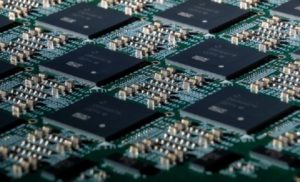8 million-neuron neuromorphic system comprising of 64 chips is now available to supplement the growing need for specialised architectures designed for specific applications.

Codenamed the “Intel Pohoiki Beach” after a black-sand beach in Hawaii, Intel said that researchers could now experiment with Intel’s human brain-inspired research chip called Loihi, which implements the same biological brain principles to computer architectures.
About Loihi
In 2017, Intel introduced Loihi, its first neuromorphic research chip, taking a major step forward in the development of neuromorphic hardware.
Loihi enabled users to process information up to 1,000 times faster and 10,000 times more efficiently than CPUs for specialised applications like sparse coding, graph search and constraint-satisfaction problems.
Intel Pohoiki Beach
With the introduction of the Intel Pohoiki Beach, researchers can now efficiently scale up novel neural-inspired algorithms such as sparse coding, simultaneous localisation and mapping (SLAM), and path planning (which learns and adapts based on data inputs).
The Intel Pohoiki Beach neuromorphic system demonstrates the benefits of a specialised architecture for emerging applications, including some of the hardest computational problems for the Internet of Things (IoT) and various autonomous devices. When it will be out out in the market on a commercial basis, the computing world can expect to get high speed and efficiency for a range of real-world applications, from autonomous vehicles to smart homes to cybersecurity.
Intel has announced that it will be introducing an even larger Loihi system named Pohoiki Springs,later this year. It will build on the Pohoiki Beach architecture to deliver an unprecedented level of performance and efficiency for scaled-up neuromorphic workloads.
The way forward
In March 2018, the company established the Intel Neuromorphic Research Community (INRC) to further the development of neuromorphic algorithms, software and applications. Through INRC, Intel provides access to its Loihi cloud systems and Kapoho Bay, a Loihi-based USB form factor system, which has invigorated research on real-world applications for neuromorphic technologies.
It is expected that measurements from these research systems will quantify the gains that are achievable with neuromorphic-computing methods and pave the way for the eventual commercialisation of neuromorphic technology.









